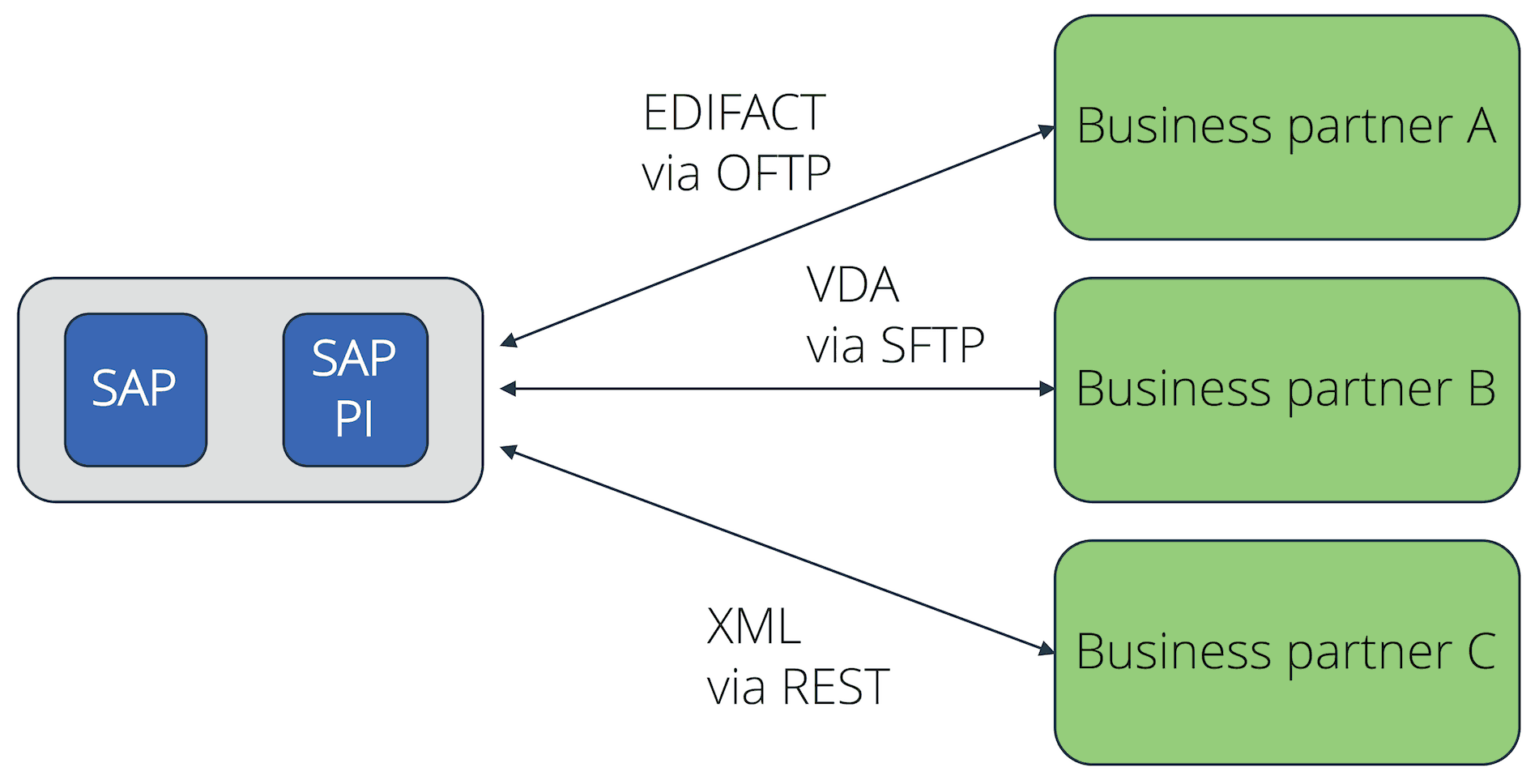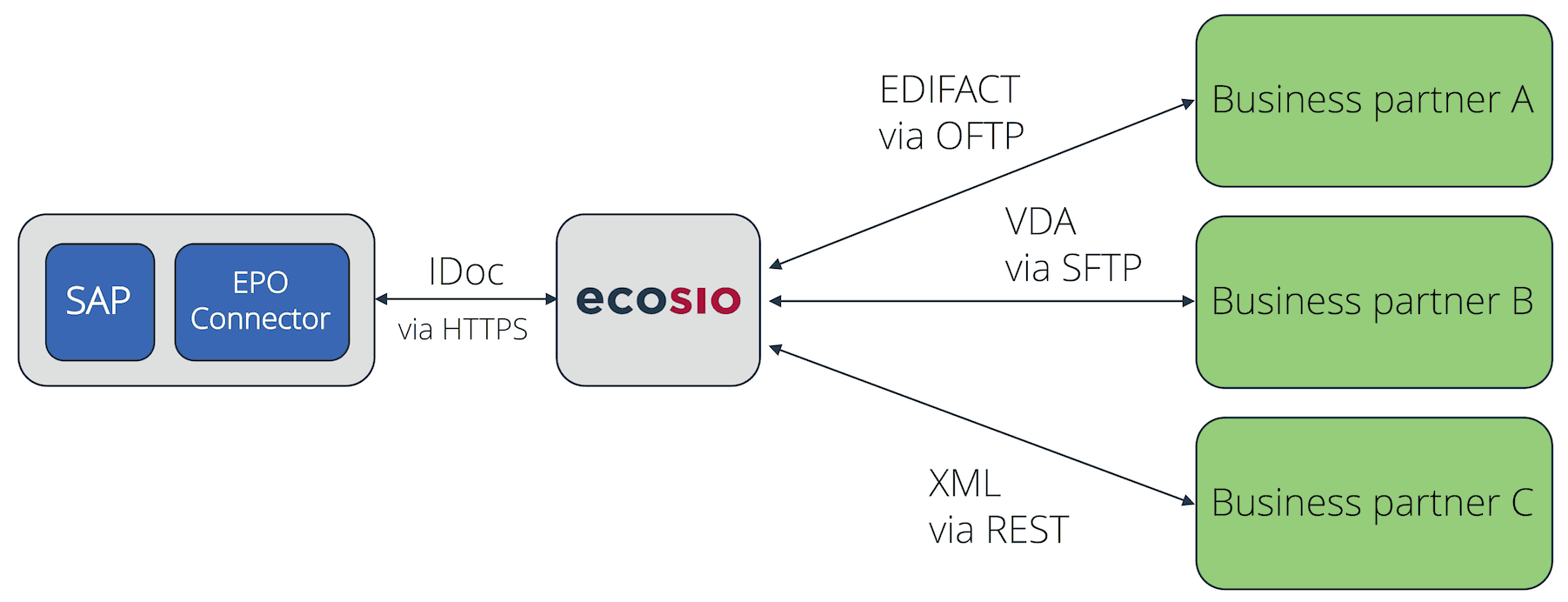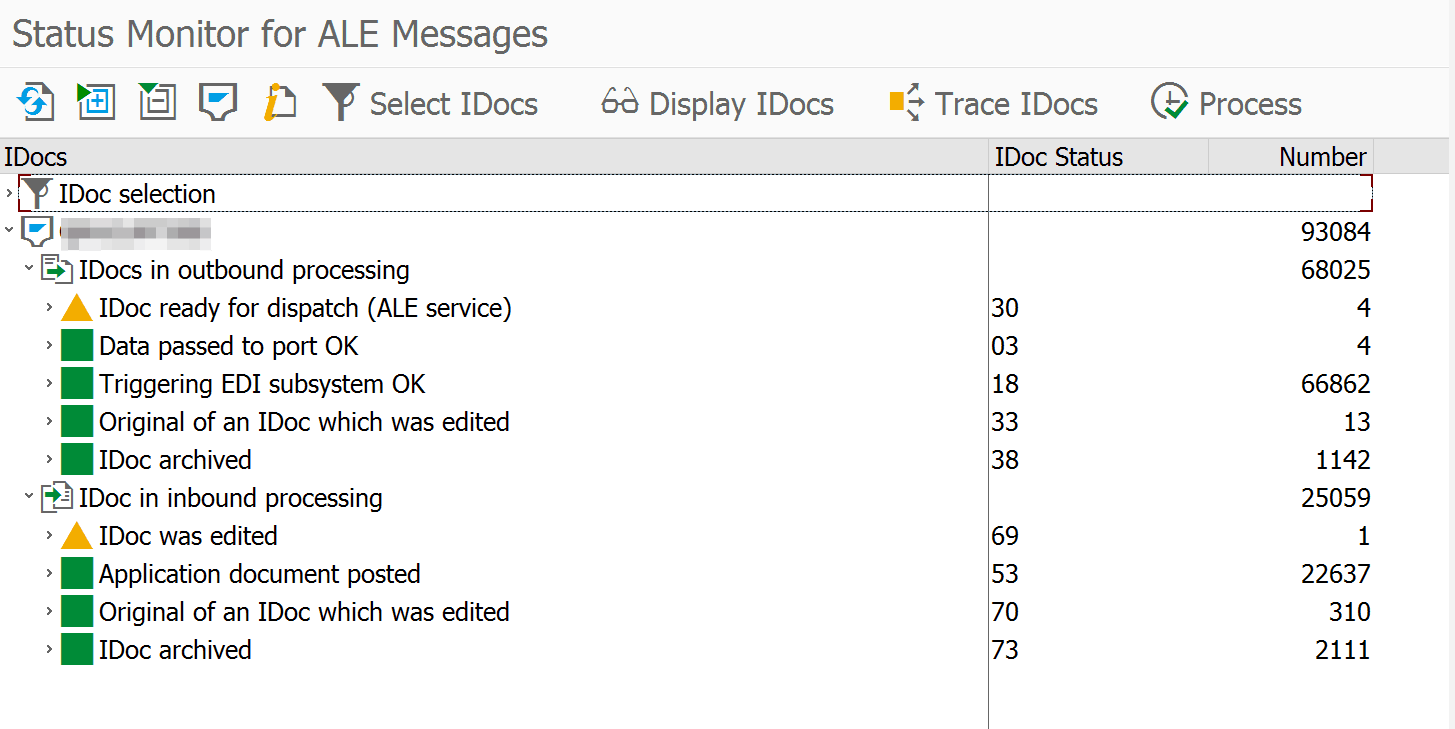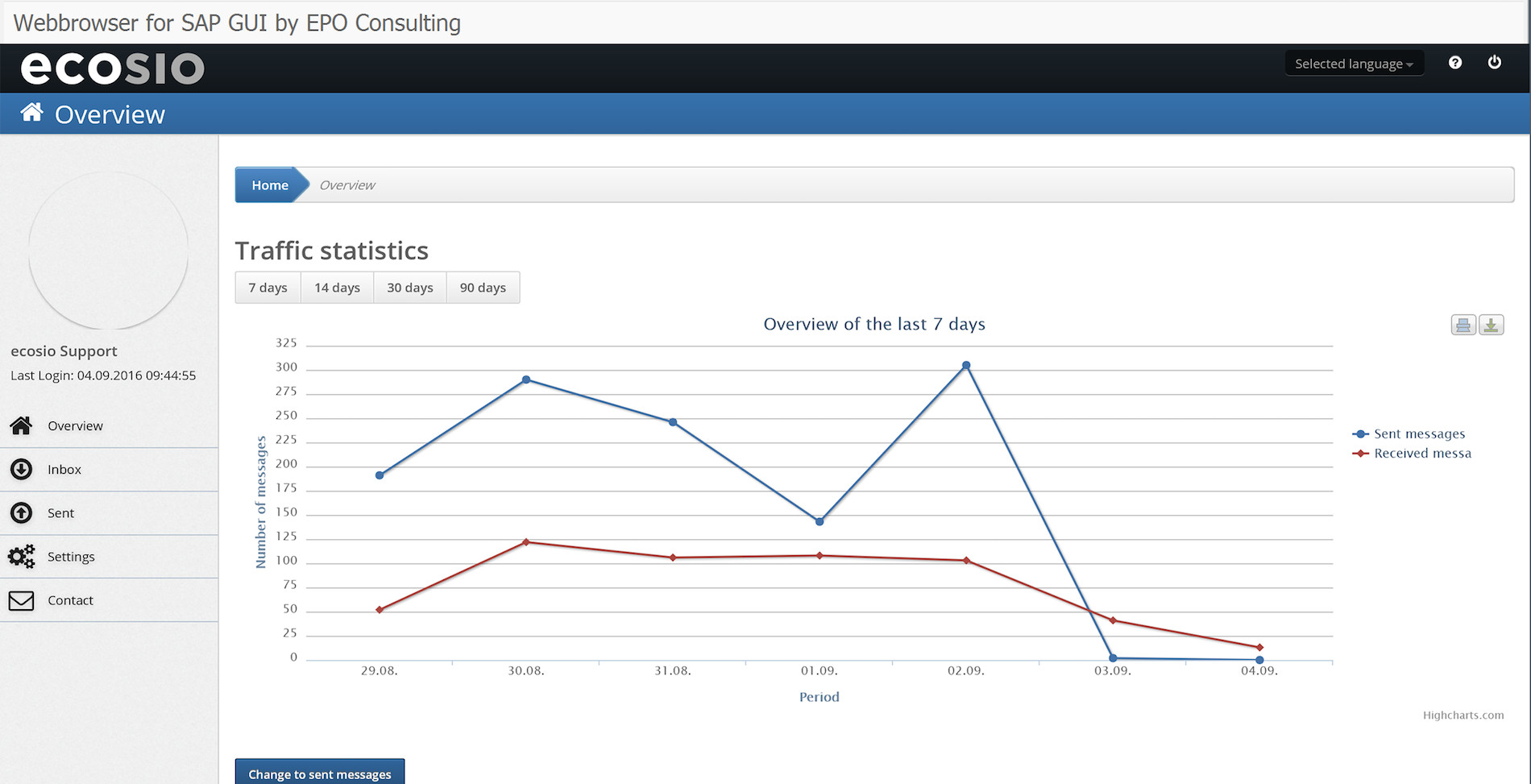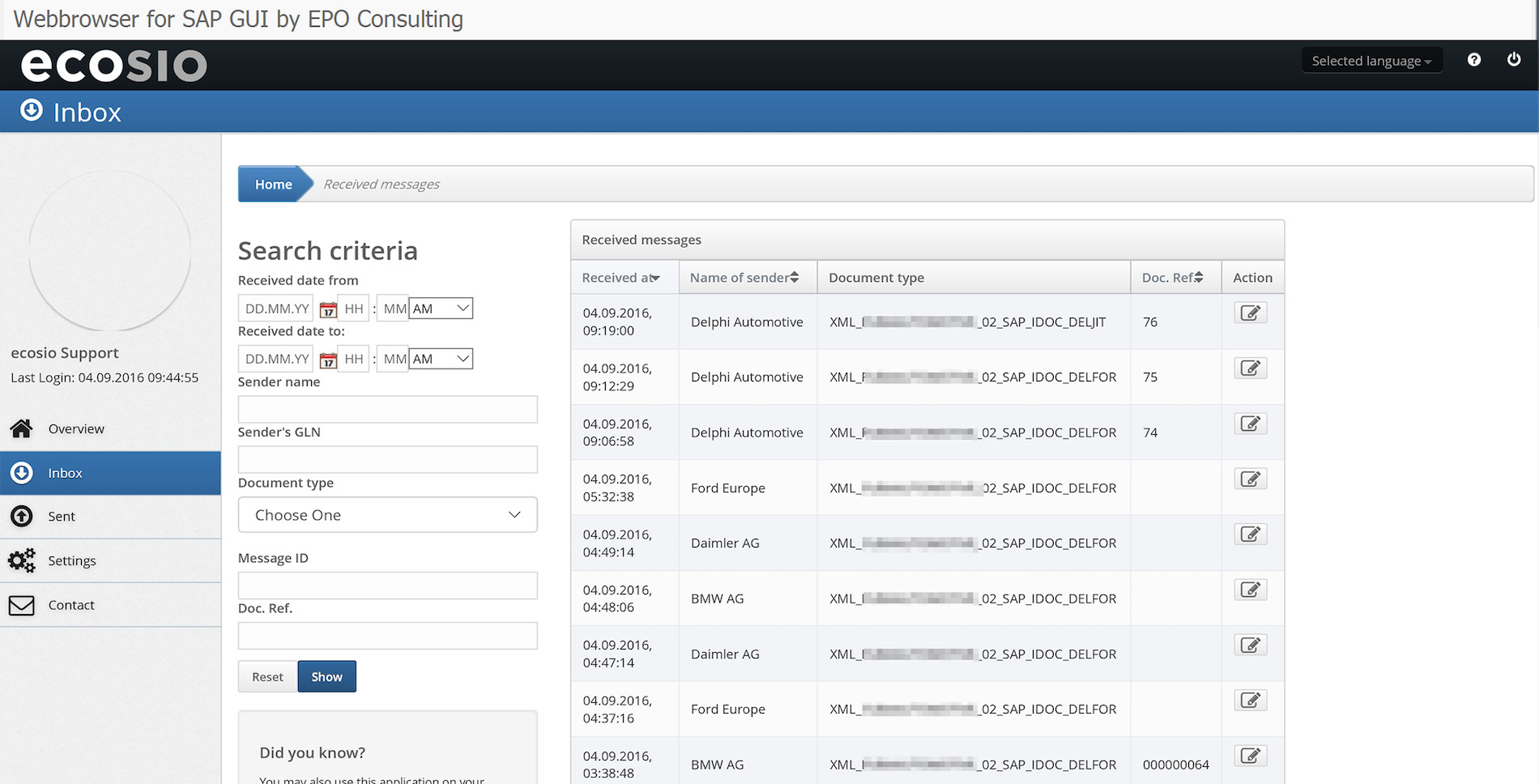SAP PI solution
SAP PI (Process Integration) is a software component offered by SAP, which allows data exchange between an SAP and an internal or external system. Therefore SAP PI is the SAP Exchange Infrastructure (SAP XI) successor. Technically speaking, SAP PI is part of SAP Netweaver, the technical platform on which the SAP ERP system runs.
The picture below illustrates the basic idea behind SAP PI using a typical EDI situation.
SAP PI can also be used to integrate internal systems (e.g. CRM system, HR systems, etc.), however, this aspect will not be discussed in this article.
Ground Principles of SAP PI in a EDI Scenario
The core functions of SAP PI are:
- Connectivity
- Mapping
- Routing
The connectivity function allows SAP PI to offer a variety of adaptors for the various message transport protocols. This includes several protocols, which are needed for the electronic data interchange with external partners, such as AS2, X.400, OFTP, SFTP, RESTful Web Services, etc.
With the support of the relevant maps, SAP PI is also able to translate files from an internal SAP format (e.g. IDoc) to an external EDI format such as EDIFACT, XML, ANSI X.12, etc. The maps can be created using a graphic editor and deployed based on XSLT or with the help of an ABAP program.
The routing will then help to deliver the messages to different receivers, based on the information present within the file.
Challenges EDI businesses face with SAP PI
One of the main challenges when creating an EDI connection based on SAP PI is the complexity of the software. As a figure of speech, instead of being handed a hammer and nails, one needs to make do with a very comprehensive and complex toolset. Therefore a lot of know-how is needed to configure and operate SAP PI, which requires qualified employees. As EDI does not go home at 5pm, but is a 24/7 matter, the responsible employees constantly need to be available in the business for maintenance and to ensure a smooth EDI process.
Below is an outline of the many other challenges a company might encounter in its day-to-day operations.
Connection parameter maintenance
Despite the common belief, EDI connections are not entirely maintenance free. Connections using digital certificates (e.g. AS2 or OFTP2) need to have their certificates changed regularly, in unison with the partners in order to avoid connection disruptions. One could for example expect a medium-sized company in the production industry to have a few hundred clients or suppliers who are connected via EDI. For SAP PI, this implies the maintenance of a few hundred different connections. In most cases, the number of connections is considerably higher.
When new connections need to be established, this often does not go completely smoothly. For example, AS2 allows a number of settings, which are not necessarily uniformly implemented by all business partners. Therefore the set up of a new AS2 connection requires an adequate level of detailed technical know-how. The same can be said about OFTP2 or other protocols.
Difficulties when integrating exotic protocols
Even though SAP PI supports multiple EDI protocols, there are always connections for which standard protocols will not work. An example is the Peppol network, used to deliver electronic documents within Europe. Should a company want to implement this protocol in their SAP PI, they must create their own adaptors, which would require experienced employees or an external service provider.
Maintenance of mapping tables
Having document mappings created in-house for SAP PI requires detailed know-how of the EDI standards used. Depending on the number and type of clients and suppliers, a lot of different standards and formats have to be used. Pure IDoc know-how, which many SAP trained employees have, is not enough here.
However, the effort in regard to document mappings is not only in the initial creation of the mapping tables, but also in the consistent maintenance of the existing ones. This will also require trained employees, who can apply the necessary adjustments to the mappings when changes are needed.
In addition to the technical implementation of mappings, the professional evaluation of information in document standards is also important. For example, companies in the automotive industry have their own standards (e.g. VDA). However, there can be variations in how the different automotive manufacturers apply those standards.
Due to the large number of carried out projects and implemented mappings, this domain knowledge naturally exists with an EDI service provider. Therefore, should a company wish to create each connection in SAP by itself, employees would first have to go through the tedious process of learning this knowledge. It might even prove impossible at times, as the information is not available on the manufacturer’s website, but is only known by certain contact persons in the company. Part of the challenge is to know who those contact persons are.
Constant monitoring of the EDI data flow
Another important complication when connecting with SAP PI is the constant monitoring of the EDI data flow. EDI connections might not need much maintenance, but they still need to be constantly monitored. The need for constant monitoring is due to the fact that EDI takes place in a network. Within a network, nodes may fail at any time without warning, or nodes may not behave as expected.
During a network outage, the connection to a partner can be interrupted, thus preventing the delivery of receipt confirmations (e.g. MDN for AS2 or EERP for OFTP2). In this case one would have to personally contact their business partners to find out if they received the messages correctly. To do this, one would first need to find and align the message IDs, which is time consuming.
Even though EDI is a system-to-system type of communication, there are still people in front of each system, who may enter potentially incorrect data. This would cause message maps to fail, and would need to be corrected manually. This is another case where highly trained professionals are needed, as they would need to quickly solve this issue.
X.400 cost topic
When using a paid third party network for the message exchange, such as X.400, the costs can be quite high. A single business typically gets poor conditions from these providers, as the data volumes are too low. A central service provider is able to procure large data volumes at a better price than a single business unit.
Conclusion
SAP PI offers a wide range of functionality and flexibility. However, the configuration, operation, and maintenance require the employment of adequate staff, which needs to be taken into consideration when planning the total cost of ownership. The same applies when using a local EDI converter.
Alternatives based on EPO connectors
An alternative to creating in house EDI connections based on SAP PI is the use of a managed EDI solution. Below is an example of an EDI connection based on ecosio.EDI and the EPO connector.
One connection for all
The main difference to EDI connections with SAP PI is the concept of one connection for all. The following diagram illustrates how instead of having x different connections to one’s business partners, a company can only have one connection to a central EDI provider, ecosio in this case.
EDI Connection Using EPO Connector
The EDI provider takes over all tasks centrally – tasks which would be carried out in an in house solution with SAP PI. This includes the set up and maintenance of the EDI connections, setting up and maintaining document mappings, the correct routing of messagess, and the ongoing monitoring of the data flow.
Instead of maintaining x different connections and mappings in SAP, the SAP native document exchange format IDoc is used. Incoming IDocs are delivered to the EPO Connector by ecosio, and appear in SAP, directly in transaction BD87. The EPO connector will automatically accept outbound IDocs and deliver them to ecosio, who then converts them into the correct final format and delivers them to the receiver.
The only task that is left to the SAP system is to monitor transaction BD87, to get an overview of the inbound and outbound IDoc. The illustration below shows this overview.
IDoc Overview of Transaction BD87
© 2020. SAP SE or an SAP affiliate company. All rights reserved. Used with permission of SAP SE.
Should a more detailed tracking of an inbound or outbound message be needed, the ecosio.Monitor can be used for this purpose as well. It provides an overview of all sent and received messages, and informs users about the delivery status of messages. With a sent message for example, it is possible to see if the receiver actually received the message (e.g. Daimler or BMW).
In order to view the ecosio.Monitor, it is not necessary to leave the SAP. On the contrary, the ecosio.Monitor can be opened directly in SAP with one click on the EDI message ID in the IDoc viewing page, as demonstrated below. A login using a single-sign-on solution is performed in the background. Thus, the user does not have to enter any login credentials for the ecosio.Monitor.
ecosio.Monitor directly accessible in SAP
In the ecosio Integration Hub SAP users can view the delivery state of a specific message, or check other sent or received messages.
Detailed View of Messages in ecosio.Monitor
Ongoing monitoring by external professionals
If a company chooses ecosio to take care of its EDI processes, the ecosio operations team constantly monitors all of the EDI data flow. Should there be issues with the delivery of messages from and to business partners, the operations team will sort this out with their EDI contact person and the message delivery will resume as soon as the issue is resolved.
Since the operations team’s main task is to monitor EDI connections and solve issues, the phone numbers and email addresses of all EDI contacts of the different companies are stored. The team even knows some of the EDI contact persons personally, which reduces the communication effort and increases the speed at which issues are being solved.
24/7 Connection monitoring
EDI processes are time sensitive, especially in logistics. DESADVs (Dispatch Advice) need to be sent on time, DELJIT (delivery just in time) and production synchronous forecasts must be received on time etc. Therefore a connection breakdown would be disastrous, as it would prevent reaching SLAs and can lead to penalties on the business partner’s side.
All connections to and from ecosio are monitored 24/7. If a connection stops, an alerting mechanism kicks in, allowing the operations team to counteract quickly.
Set Up of any connection protocol
Thanks to their full focus on EDI topics, an EDI provider such as ecosio can implement even the more exotic protocols, Peppol being one example of these. From an SAP point of view, this means that no expensive or complicated special adaptors are needed for SAP PI data exchange.
Summary
SAP PI offers SAP users a wide range of possibilities and functions to create connections to internal and external systems. Especially when considering the total cost of ownership, an outsourced EDI solution with an external EDI service provider is cheaper than an in-house EDI solution.
Do you have any questions?
Do you still have questions about SAP PI data exchange or EDI with a SAP ERP system? Feel free to contact us, we would love to help you!
SAP ERP and SAP S/4HANA are the trademarks or registered trademarks of SAP SE or its affiliates in Germany and in several other countries.


